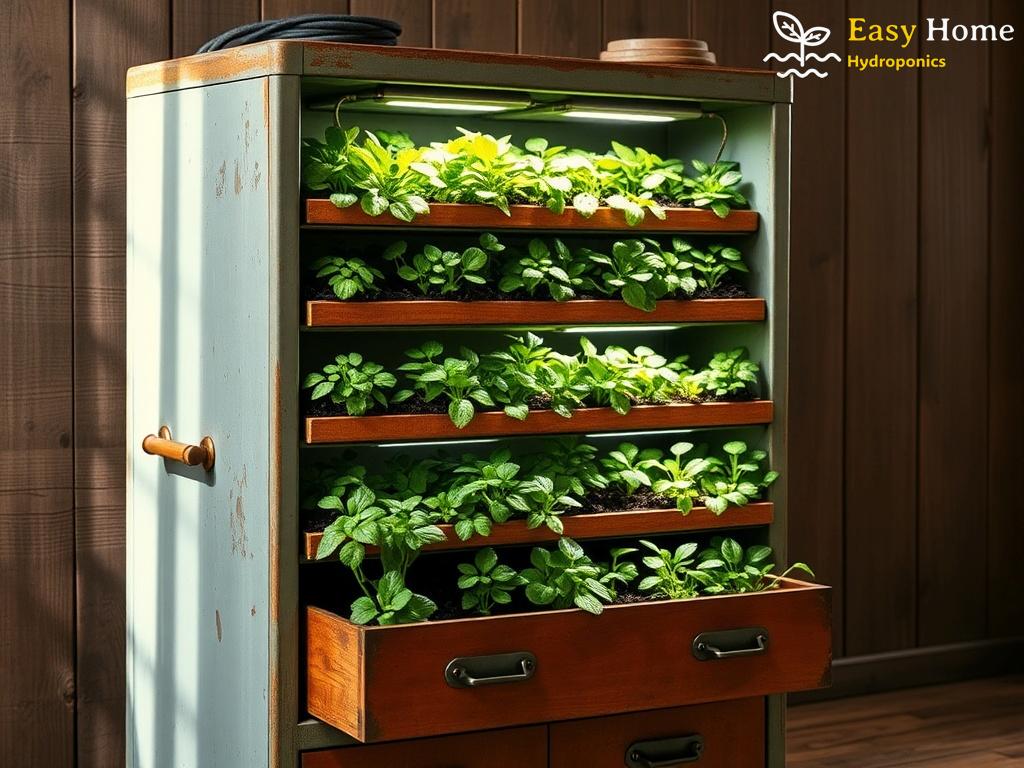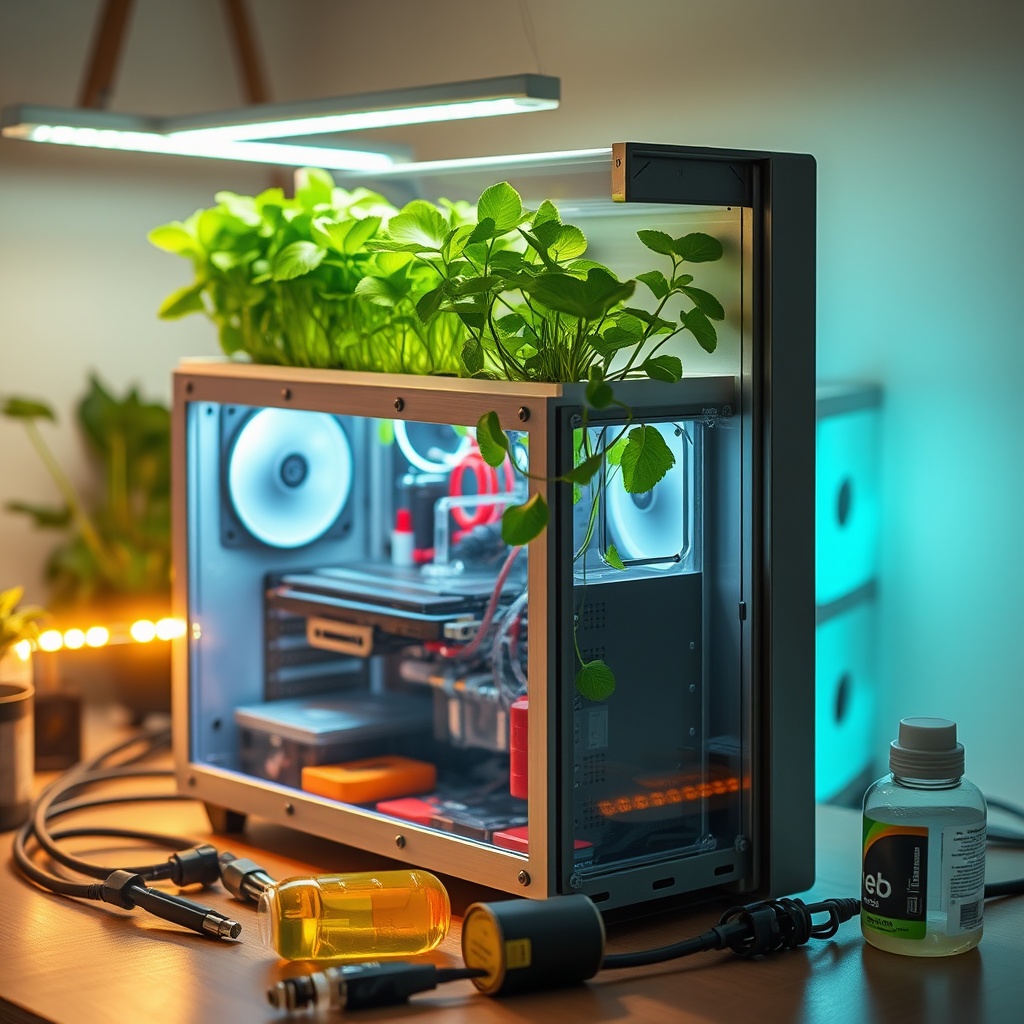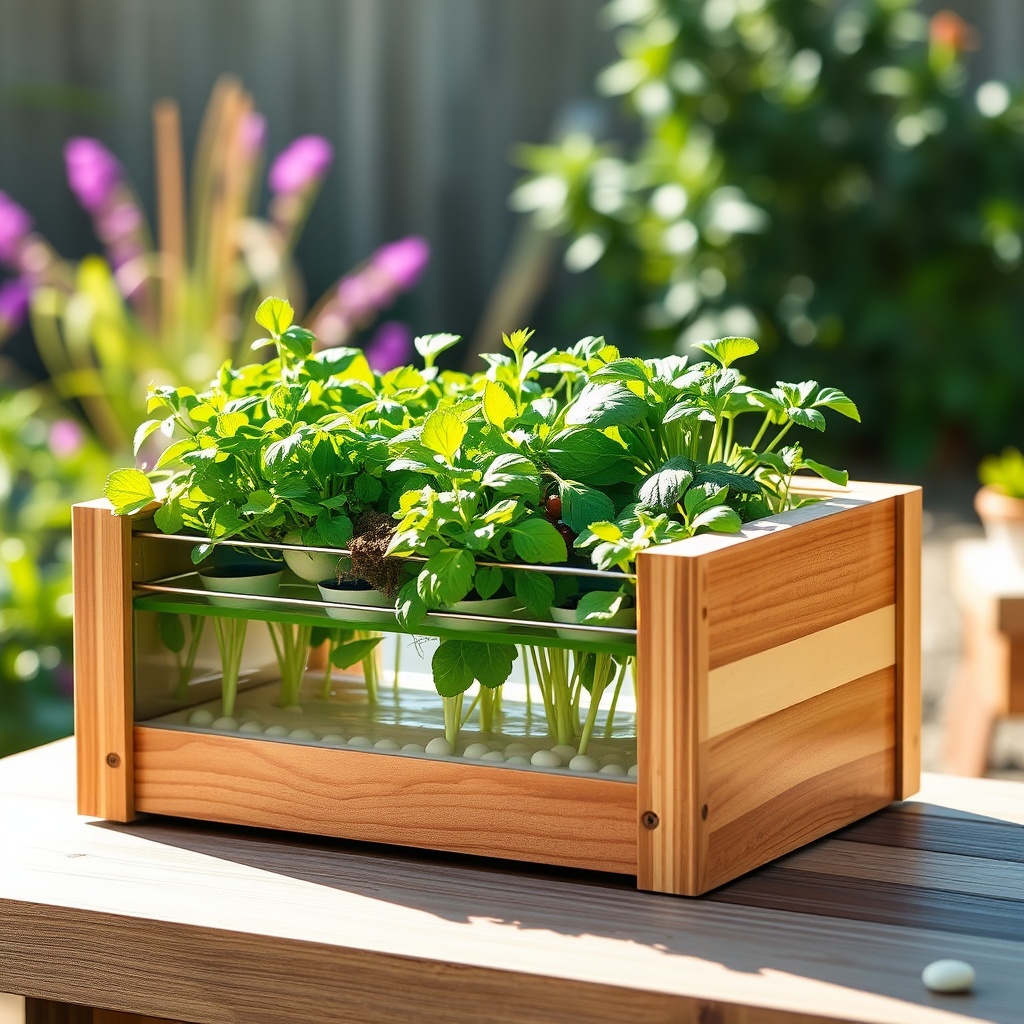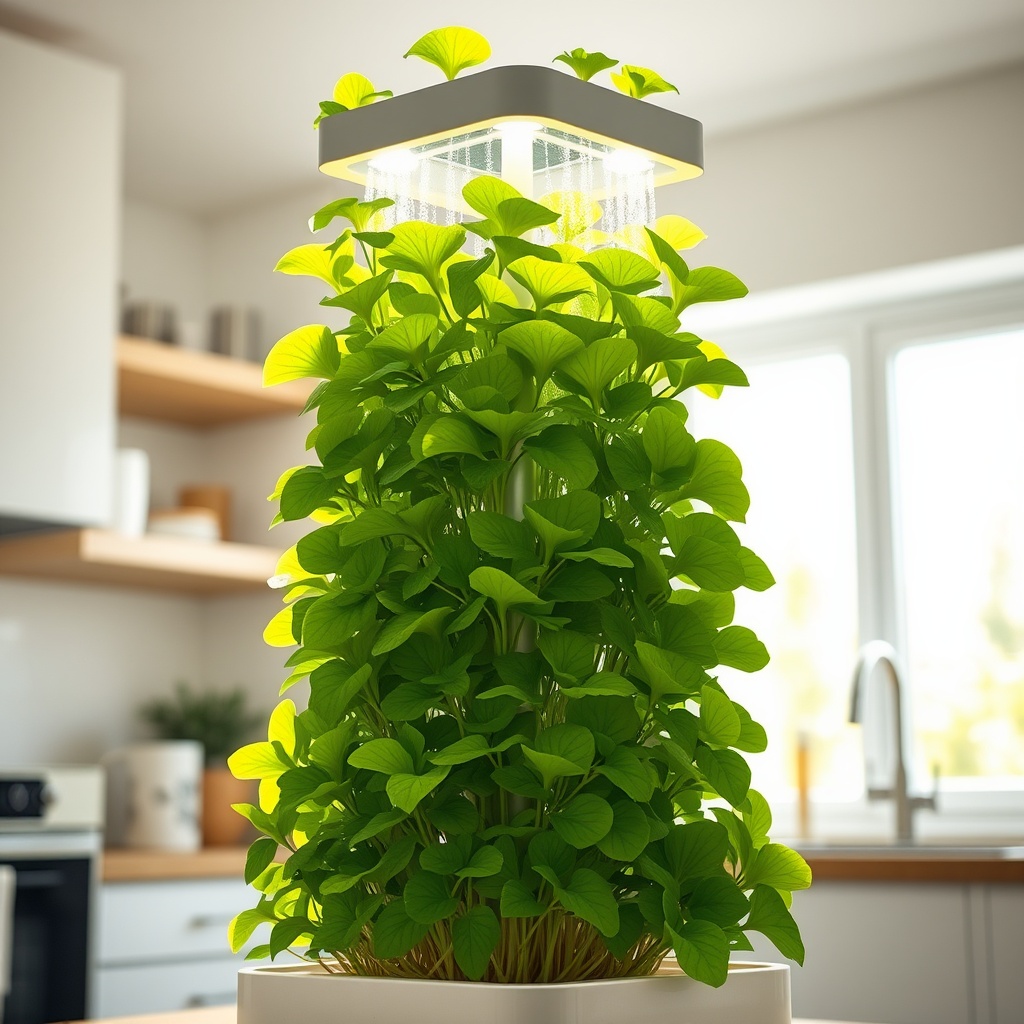Reviving Old Cabinets: The Hydroponic Revolution
In a world increasingly focused on sustainability, the concept of reusing old furniture has taken a fresh twist. Old filing cabinets, often relegated to the dark corners of our offices or attics, are being repurposed into vibrant hydroponic gardens. This innovative approach not only promotes eco-friendliness but also allows urban dwellers to enjoy fresh produce right from their homes.
Imagine opening a drawer once filled with paperwork and finding instead a thriving garden of herbs and vegetables. Hydroponics, the method of growing plants without soil, provides an ideal solution for those looking to maximize their limited space. Using old filing cabinets as hydroponic systems can be both functional and aesthetically pleasing, transforming mundane furniture into a focal point of greenery.
Starting your hydroponic garden in an old filing cabinet is simpler than you might think. Here’s a quick guide to get you started:
- Step 1: Gather Materials – You will need an old filing cabinet, water reservoir, growing medium (like clay pellets), and a nutrient solution.
- Step 2: Prepare the Cabinet – Clean the cabinet thoroughly and ensure it’s structurally sound.
- Step 3: Create the Hydroponic System – Drill holes in the drawers for net pots, install a pump for water circulation, and set up the reservoir below.
- Step 4: Add Plants – Fill the net pots with your chosen growing medium and plant seeds or seedlings.
- Step 5: Maintain – Monitor water levels, nutrient concentration, and light exposure to ensure healthy plant growth.
Understanding the different hydroponic systems can help you choose the best approach for your filing cabinet garden. Below is a comparison of popular methods:
| Hydroponic Method | Description | Pros | Cons |
|---|---|---|---|
| Deep Water Culture | Plants are suspended in nutrient-rich water. | Fast growth, simple setup. | Risk of root rot if not monitored. |
| Wick System | Uses a wick to draw nutrient solution to the plant roots. | No moving parts, easy to maintain. | Less effective for larger plants. |
| Drip System | Delivers nutrient solution directly to the roots. | Efficient use of water and nutrients. | Requires a pump and timer. |
Essential Tools for Your Hydroponic Setup
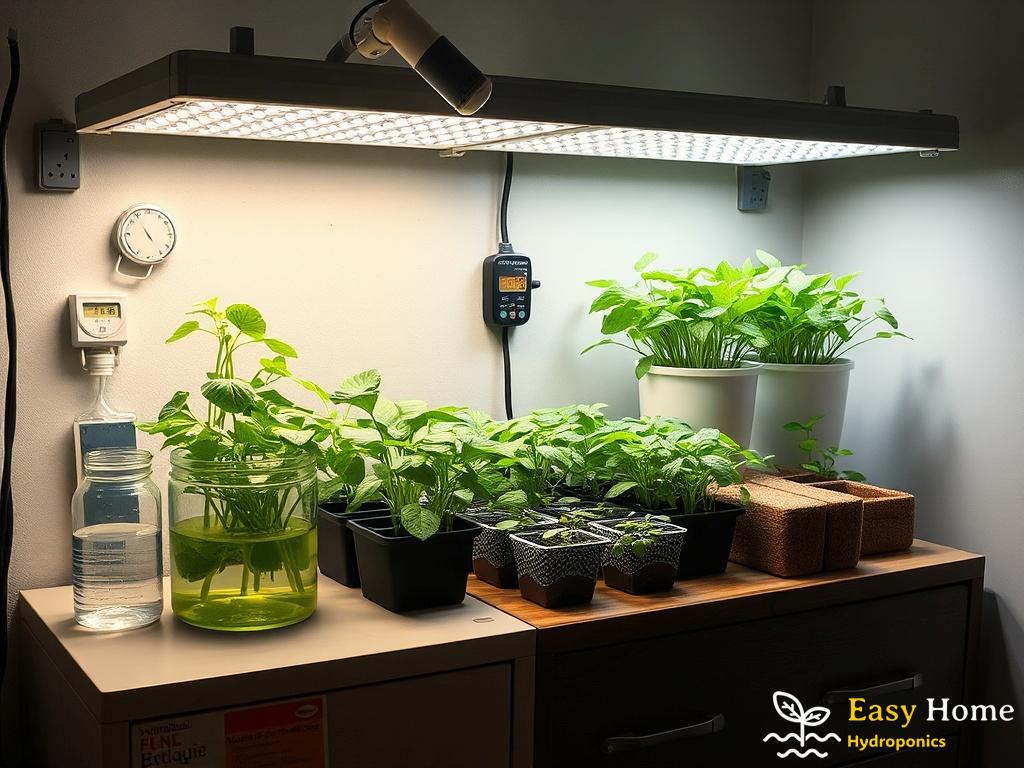
Transforming your old filing cabinet into a flourishing hydroponic garden is not just an intriguing DIY project; it’s an investment in sustainability and freshness. However, embarking on this green journey requires a few essential tools to ensure your plants thrive in their new home. Equipping yourself with the right gear will not only streamline the setup process but will also enhance the overall growth and yield of your hydroponic garden.
Your hydroponic garden will flourish only when you have the right components in place. Firstly, nutrient solutions are vital as they provide the essential minerals that plants need to grow without soil. These solutions come in liquid form and can be easily mixed with water, providing a balanced diet for your plants.
Additionally, a water pump is crucial for circulating the nutrient solution within your system. This pump ensures that every plant receives the nutrients it requires, preventing stagnation and promoting healthy root systems. The choice of a reliable pump can significantly affect the efficiency of your hydroponic setup.
As you set up your hydroponic garden, you will also need grow lights if natural sunlight is limited. LED grow lights are popular for their energy efficiency and ability to simulate sunlight, which is essential for photosynthesis. Placing these lights at appropriate distances from your plants will help in achieving optimal growth.
Another important tool is a pH meter, which helps you monitor the acidity of your nutrient solution. Maintaining the right pH levels is crucial as it affects nutrient availability. Regular checks with a pH meter can save you from potential plant health issues that arise from imbalanced pH levels.
Lastly, consider investing in a thermometer and hygrometer to keep track of temperature and humidity in your hydroponic environment. These tools allow you to create a stable climate for your plants, ensuring they grow in optimal conditions.
| Tool | Purpose |
|---|---|
| Nutrient Solution | Provides essential minerals for plant growth |
| Water Pump | Circulates nutrient solution to plants |
| Grow Lights | Simulates sunlight for photosynthesis |
| pH Meter | Monitors nutrient solution acidity |
| Thermometer & Hygrometer | Tracks temperature and humidity levels |
By gathering these essential tools, you will not only enhance the functionality of your hydroponic garden but also ensure a more bountiful harvest. So, roll up your sleeves, gather your materials, and let your creativity shine as you embark on this green adventure!
Choosing the Right Plants for Your Cabinet Garden
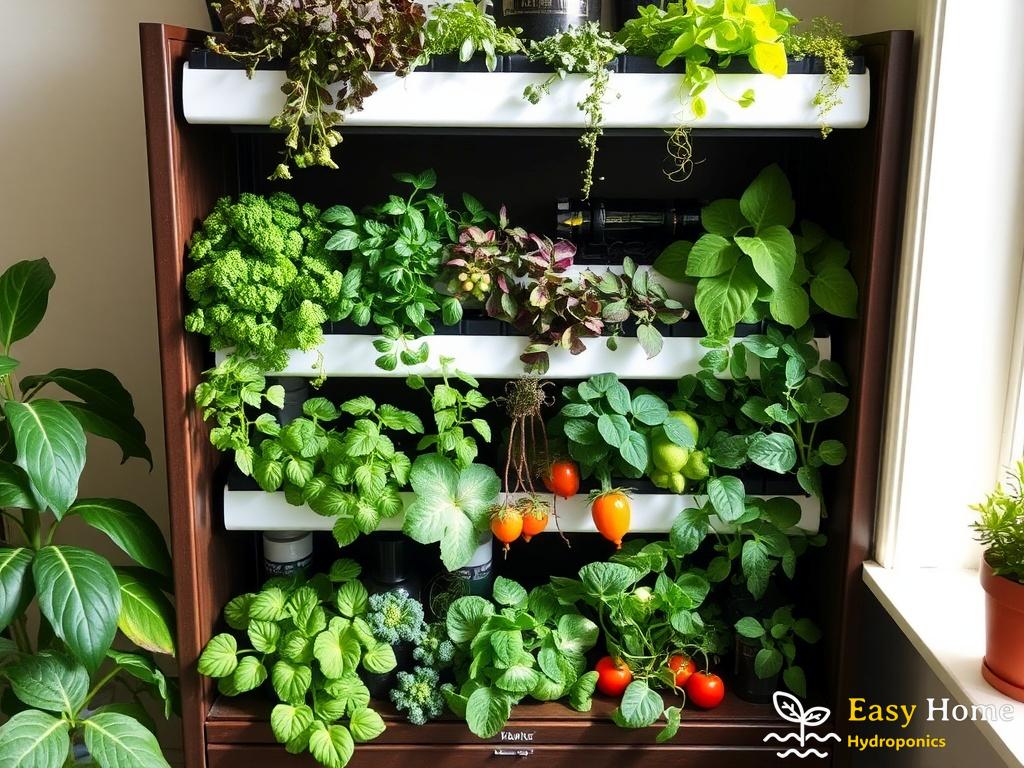
Creating a hydroponic garden in an old filing cabinet is an exciting adventure that opens up a world of possibilities. However, the success of your green endeavor hinges significantly on the plants you choose to cultivate. Selecting the right plants not only ensures a thriving garden but also enhances your culinary experience. Let’s dive into the factors to consider when choosing plants for your hydroponic setup.
Before you fill your hydroponic system with seeds or seedlings, it’s essential to assess a few key factors that will influence your choices:
- Space and Size: Consider the dimensions of your filing cabinet. Compact varieties of plants are excellent for smaller spaces, while larger cabinets can accommodate more sprawling species.
- Growth Rate: Fast-growing plants can provide quicker yields, making them ideal for beginners eager to see results. Choose plants that mature swiftly to keep your gardening spirit high.
- Personal Preference: Think about what you enjoy eating. Growing your favorite herbs or vegetables will make the experience more rewarding and fulfilling.
- Light Requirements: Evaluate the light availability in your chosen location. Some plants thrive in low-light conditions while others demand bright light to flourish.
Once you’ve assessed the factors above, it’s time to explore some popular plant options that flourish in hydroponic systems. These selections are not only easy to grow but also highly rewarding:
- Herbs: Basil, mint, and parsley are fantastic choices for hydroponics. They grow quickly, require minimal space, and can be used in a variety of dishes.
- Leafy Greens: Lettuce, spinach, and kale thrive in hydroponic settings. Their fast growth and nutritional benefits make them a staple for many gardeners.
- Fruiting Plants: If space permits, consider strawberries or cherry tomatoes. They can be very rewarding as they produce delicious results and add a pop of color to your cabinet garden.
Don’t hesitate to experiment with a mix of plants in your hydroponic cabinet garden. Combining herbs with leafy greens can create a balanced ecosystem. Additionally, interplanting can help with pest management and improve overall yields. The key is to ensure that the plants you choose can coexist harmoniously in terms of their nutrient and light requirements.
Nutrient Solutions: Feeding Your Hydroponic Eden
Creating a vibrant hydroponic garden from an old filing cabinet is not just about aesthetics; it’s about nurturing your plants with the right nutrients to ensure they thrive. In a soil-less environment, plants rely heavily on nutrient solutions, which serve as their primary source of nourishment. Understanding these solutions can unlock the secret to an abundant and flourishing garden right in your home.
The heart of any hydroponic system lies in its nutrient solution. This mixture contains essential macro and micronutrients that plants need for optimal growth. Key components include nitrogen, phosphorus, potassium, calcium, magnesium, and iron, which are vital for various physiological processes within the plant. The right balance of these nutrients can lead to vigorous growth, vibrant colors, and bountiful harvests.
When embarking on your hydroponic journey, it’s crucial to pay attention to nutrient concentration. Over-fertilizing can be just as detrimental as under-fertilizing. To maintain the perfect balance, regularly test your nutrient solution using a conductivity meter. This tool measures the electrical conductivity of your solution, providing insights into its strength. Aim for a conductivity level that matches the needs of your chosen plants; leafy greens may require different concentrations compared to fruiting plants.
Furthermore, the pH level of your nutrient solution plays a significant role in nutrient uptake. Most plants thrive at a pH of 5.5 to 6.5. Regularly monitoring this with a pH meter will help you avoid nutrient lockout, where plants cannot absorb essential nutrients due to improper acidity levels. If adjustments are needed, pH up or down solutions can help you achieve the desired balance.
There are various types of nutrient solutions available, each designed for specific plant types and growth stages. For instance, hydroponic nutrient solutions can be categorized into two main types: one-part solutions and two-part solutions. One-part solutions are convenient and easy to use, making them ideal for beginners. However, two-part solutions often provide a more tailored nutrient profile, allowing for greater customization to meet specific plant needs.
Moreover, considering whether to use organic or synthetic nutrient solutions can greatly influence your gardening experience. Organic solutions tend to promote a more balanced ecosystem, enhancing microbial activity that benefits plant health. In contrast, synthetic options often deliver quicker results, which may appeal to those eager to see rapid growth.
| Type | Advantages | Disadvantages |
|---|---|---|
| One-Part Solutions | Easy to use, convenient | Less customizable |
| Two-Part Solutions | Highly customizable, tailored nutrition | More complex to mix |
| Organic Solutions | Promotes healthy ecosystems | Slower results |
| Synthetic Solutions | Fast growth | Potential chemical buildup |
Crafting your hydroponic Eden requires more than just a passion for plants; it demands a thorough understanding of nutrient solutions and their impact on your garden. By paying close attention to the nutrient needs of your plants, you will not only cultivate a beautiful green space but also reap the rewards of your hard work in the form of fresh, home-grown produce.
Maintenance Tips for Thriving Hydroponic Gardens
Creating a hydroponic garden in an old filing cabinet is an exciting venture that allows you to grow fresh produce right in your home. However, the key to a flourishing garden lies in the ongoing maintenance practices you adopt. Regular upkeep not only ensures that your plants thrive but also enhances the overall yield and quality of your harvest. Let’s delve into some essential maintenance tips that will keep your hydroponic garden vibrant and productive.
A hydroponic garden functions on the principle of nutrient solutions, making it crucial to regularly monitor and adjust nutrient levels. Plants absorb nutrients from the solution, and fluctuations can lead to deficiencies or toxicities. To maintain a healthy environment, utilize a conductivity meter to gauge the strength of your nutrient solution. This device measures the electrical conductivity, indicating how rich your solution is. Aim for optimal conductivity levels suited for your plant types, as leafy greens and fruiting plants have different nutritional needs.
Additionally, testing the pH of your nutrient solution is equally important. Most plants flourish in a pH range of 5.5 to 6.5. Regular checks with a pH meter can prevent nutrient lockout, where plants fail to absorb essential elements due to improper acidity. If adjustments are needed, pH up or down solutions become your allies in achieving the perfect balance, ensuring your plants receive their crucial nutrients without hindrance.
Light plays a vital role in the growth of your hydroponic plants. If your setup lacks access to natural sunlight, integrating LED grow lights can significantly enhance plant health. These lights simulate sunlight and are energy-efficient, making them ideal for indoor gardening. Positioning the lights at the right distance from your plants is essential to avoid burning them while providing adequate illumination for photosynthesis.
Furthermore, creating a stable environment for your plants will yield better results. Use a thermometer and hygrometer to keep track of temperature and humidity levels within your garden. Maintaining a consistent climate helps prevent stress on your plants, leading to robust growth and higher yields. Remember to check for any signs of pests or diseases regularly, as proactive measures can save your garden from potential disasters.
By focusing on these maintenance aspects, you’ll transform your hydroponic garden from a simple DIY project into a flourishing green sanctuary. The dedication you invest in monitoring nutrient levels and ensuring an optimal environment will reward you with bountiful harvests and a sense of pride in your sustainable gardening endeavor.

